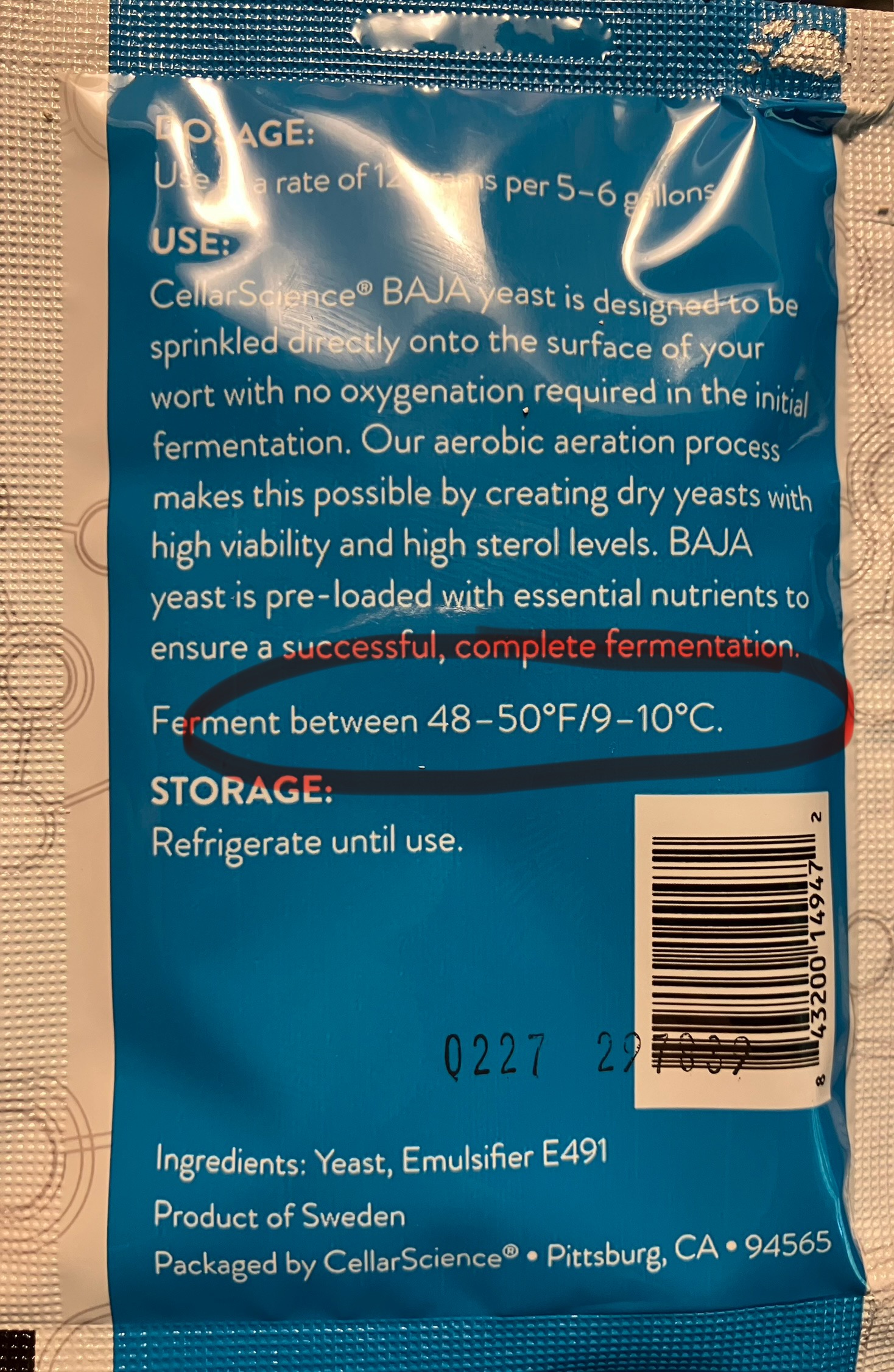I’m brewing my first lager, a Mexican cervesa using the Baja Mexican lager yeast, (two packs as recommended). I have never done a lager, mostly due to the fact that I don’t have a dedicated fermentation chamber and I live in the South. However, I had a freezer cleaned out to add a collar and taps, and decided to delay the project and try a lager.
I learned at the last minute that my “Little Boy” kegmenter was too wide to fit inside, so I diverted to a 10 gallon corny for the 5 gallon batch. I am using an inkbird controller set at 49° and it is controlling the temperature quite well. (Probe is taped to side of corny with a reflectix covering.)
The issue is that after two weeks, my tilt shows that it has only dropped from 1.048 OG to 1.035. Of course, I never see any action in the blowoff at this slow rate. The recipe said to perform the diacetyl rest after two weeks, but surely it needs to be closer to FG than this.
Is this normal? I have never fermented at this low a temperature, but expected it to go a little slower. I’m not in a particular rush, so I can just let it ride if that’s what I should do.
I learned at the last minute that my “Little Boy” kegmenter was too wide to fit inside, so I diverted to a 10 gallon corny for the 5 gallon batch. I am using an inkbird controller set at 49° and it is controlling the temperature quite well. (Probe is taped to side of corny with a reflectix covering.)
The issue is that after two weeks, my tilt shows that it has only dropped from 1.048 OG to 1.035. Of course, I never see any action in the blowoff at this slow rate. The recipe said to perform the diacetyl rest after two weeks, but surely it needs to be closer to FG than this.
Is this normal? I have never fermented at this low a temperature, but expected it to go a little slower. I’m not in a particular rush, so I can just let it ride if that’s what I should do.


























































